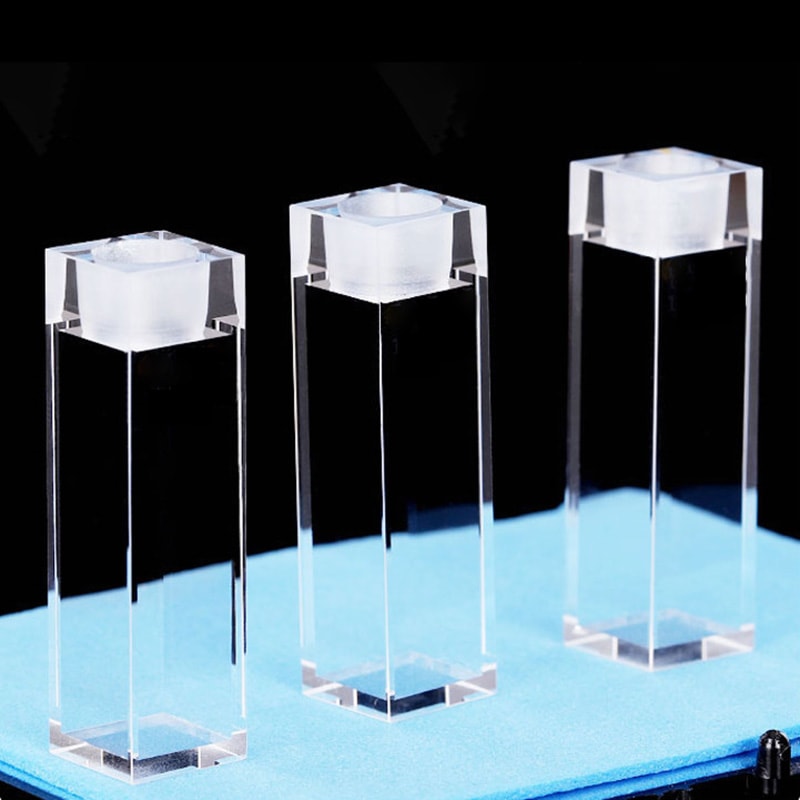Why Quartz Vials Are Perfect for Substance and Scientific Experiments
Why Quartz Vials Are Perfect for Substance and Scientific Experiments
Blog Article

The Advantages of Cuvettes and Quartz Vials in Clinical Study
In clinical research, the accuracy and reliability of measurements are paramount, particularly in fields like spectroscopy, substance analysis, and biology. One important factor that guarantees accuracy in these reports may be the cuvette, specially quartz vial. Understanding the benefits of cuvettes and the advantages of applying quartz vials may significantly influence the outcome of experiments and laboratory work.
Detail in Spectroscopy
Cuvettes are necessary for holding liquid products in a variety of logical devices, such as spectrophotometers. These units measure the absorbance or transmission of light through an example, and the cuvette acts whilst the pot for the trial during analysis. The size and product of the cuvette enjoy a crucial role in ensuring the accuracy of the measurements. Quartz vials, particularly, offer exemplary visual quality, permitting correct light sign across a wide range of wavelengths, including ultraviolet (UV) light. That makes quartz vials a great selection for spectroscopic studies, wherever accuracy is critical.
Toughness and Compound Weight
Quartz vials stand out for their toughness and resistance to harsh chemicals. Unlike plastic cuvettes, quartz vials are less likely to weaken or respond with compounds in the test, ensuring that the results of the try remain unaffected by possible contamination. That quality makes quartz vials specially of use in environments where extreme solvents or large temperatures are involved. Their power to resist excessive situations without reducing the strength of the taste is one of many major factors they are favored in many lab applications.
Reliability in Size and Shape
How big is a cuvette is not just a one-size-fits-all situation. The dimension of the cuvette, such as for instance their path size, impacts the volume of the taste and the quantity of light that passes through. Selecting the correct cuvette size for the specific test assures that the email address details are perhaps not manipulated as a result of under or over-concentration of the sample. Quartz vials come in a number of dimensions and styles, allowing researchers to pick the most correct alternative on the basis of the needs of the experiment. That mobility contributes to more correct data and enables greater get a handle on around fresh conditions.
Visibility and Mild Transmission
Quartz is known for their excellent transparency, especially in the ultraviolet (UV) and apparent gentle spectra. That makes quartz vials suitable for use in devices that need apparent optical paths, such as for example UV-Vis spectrophotometers. The superior light transmission properties of quartz make sure that the gentle goes through the sample with minimal spreading or assimilation, leading to more correct readings. For studies that demand high detail, quartz vials provide a distinct benefit around different materials.
Long-Term Consistency
When employed in study labs, it is a must to have trusted instruments that maintain their strength around time. Quartz vials aren't just chemically immune but additionally very durable, meaning they're less likely to experience wear and tear. This long-term reliability guarantees that scientists can use quartz vials for lengthy times without fretting about destruction or the need for frequent replacements, causing cost-effectiveness in the extended run.
In summary, equally cuvettes and quartz vials offer a selection of benefits that enhance the quality and reliability of laboratory experiments. From their remarkable optical quality for their chemical opposition and durability, these instruments are essential in scientific research. By selecting the best cuvette size and applying quartz vials, experts can assure precise sizes and achieve more reliable results inside their studies. Report this page